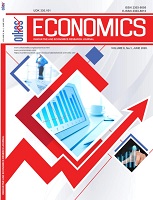Central and South–Eastern Europe Banking Sectors in The Sustainable Development Function
Central and South–Eastern Europe Banking Sectors in The Sustainable Development Function
Author(s): Nenad Vunjak, Miloš Dragosavac, Jelena Vitomir, Petra StojanovićSubject(s): Economic history, Economic development, Transformation Period (1990 - 2010), Present Times (2010 - today), Financial Markets, Globalization
Published by: Oikos institut-Istraživački centar Bijeljina
Keywords: Happiness Index; Sleep Economics; Sleep Deprivation; Inadequate Sleep;
Summary/Abstract: Changes in banking sectors with the onset of the global financial crisis were related to: globalization, sector deregulation, technological change and financial innovation. Structural changes within banking services (at the end of the 20th century) relate to: the consolidation of banks, the merging of banking and non-banking financial institutions and their competition with one another. Significant place in the part of sustainable development belongs to bank performance, vision and mission of banks. The corporate vision of banks should be the “framework” for the future development of a bank. The corporate mission should be a “roadmap” to the realization of the bank’s vision and an expression of the business philosophy of the bank in question. It is of particular importance for the banking sectors of the CEE countries to define: the vision, the mission, the situational analysis and the planned long-term goals of the bank. With the advent of the global financial crisis, the financial activity of banks in the Central and South-eastern European region decreased, as the number of attractive fusion and acquisition banks in the region concerned was reduced. The aim of the research is to determine the importance of the vision, mission and clearly set goals in banks, where the analysis of banking sectors in 13 countries over a period of 11 years was carried out. The analysis of GDP and its growth in the period from 2008 to 2018 indicates a dynamic growth in the countries of Central Europe and some countries of Southeast Europe. The analysis of the assets of the banking sector and its share in GDP indicates the dominant participation of the countries of Central and South-eastern Europe that are members of the European Union relative to the candidate countries for EU member states. Analysis of the banking sector of the influx countries shows that more than 70% of the banking market in Southeast European countries is influenced by foreign highly developed banking groups. Sustainable development can only be achieved through the active joint action of the banking sectors of the Central and Southeast European countries.
Journal: ECONOMICS-INNOVATIVE AND ECONOMICS RESEARCH JOURNAL
- Issue Year: 8/2020
- Issue No: 1
- Page Range: 53-62
- Page Count: 10
- Language: English

